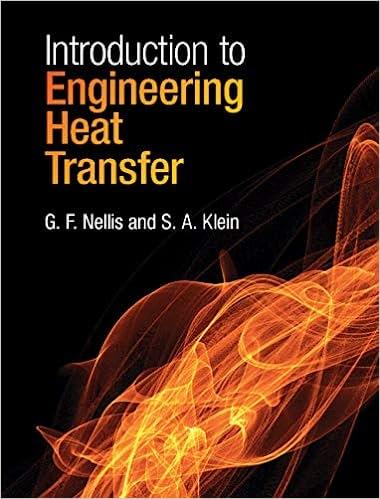Answered step by step
Verified Expert Solution
Question
1 Approved Answer
Question PLEASE SOLVE ONLY E , F AND G . THANK YOU. 4 . 1 6 of the textbook. 4 . 1 6 . Consider
Question
PLEASE SOLVE ONLY E F AND G THANK YOU.
of the textbook.
Consider the following chain
reaction mechanism for the high
temperature formation of
nitric oxide, i
e
the Zeldovich mechanism:
O
N
NO
N
a
N
O
NO
O
b
The reaction rates of Eqs.
a
and
b
are k
f and k
f
respectively
A
Write out expressions for d
NO
dt and d
N
dt
B
Assuming N atoms exist in steady state and that the concentrations of O
O
and N
are at their equilibrium values for a specified temperature and composition, simplify your
expression obtained above for d
NO
dt for the case of negligible reverse reactions.
Answer:
d
NO
dt
k
f
O
eq
N
eq
C
Write out the expression for the steady
state N
atom concentration used in part B
D
For the conditions given below and using the assumptions of part B
how long does it
take to form
ppm
mole fraction
times
of NO
T
K
rho
kg
m
M W
kg
kmole
chi O
eq
times
mole fraction,
chi O
eq
times
mole fraction,
chi N
eq
mole fraction, and k
f
times
exp
T with units of cm
gmol
s
E
Calculate the value of the reverse reaction rate coefficient for the first reaction, i
e
O
N
NO
N
for a temperature of
K
F
For your computations in part D
how good is the assumption that reverse reactions are
negligible? Be quantitative.
G
For the conditions of part D
determine numerical values for
N
and
chi N
Note: k
f
times
T exp
T with units of cm
gmol
s
Hint: The answer to part
D
is: about
msec The answer to part
G
is: about
times
ppm
Step by Step Solution
There are 3 Steps involved in it
Step: 1

Get Instant Access to Expert-Tailored Solutions
See step-by-step solutions with expert insights and AI powered tools for academic success
Step: 2

Step: 3

Ace Your Homework with AI
Get the answers you need in no time with our AI-driven, step-by-step assistance
Get Started


